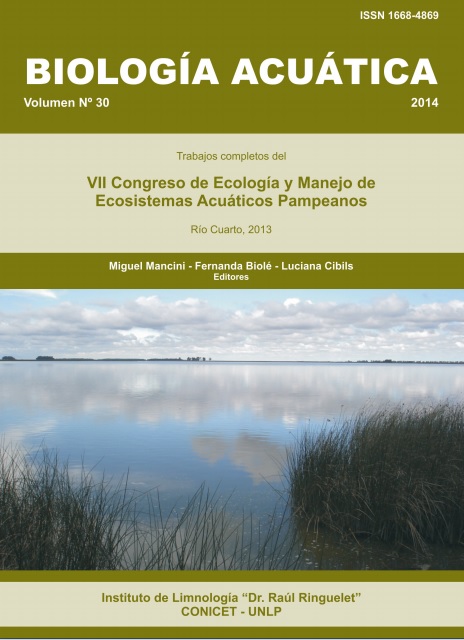Caracterización limnológica y fauna de peces de la laguna La Helvecia (Córdoba, Argentina)
Keywords:
pampean shallow lakes, Argentina, La Helvecia, ecology, fish, Odontesthes bonariensisAbstract
La Helvecia shallow lake (33°25’16’’S, 62°53’26’’W, 90 ha) is one of the few permanent aquatic environments that still exist in the “Bañados del Saladillo” (Córdoba, Argentina). During November 2011, a study of fish and limnological characterization was performed. Different active and passive gears were used and water quality variables were measured. Average values pH, oxygen concentration, temperature and water transparency (Secchi disk) were 8.63, 9.05 mg/L, 23.8 °C and 39 cm respectively. The shallow lake was classified as “turbid” type. The water was hypohaline (4.74 g/L), sulfated sodium chlorinated and very hard (298 ppm CaCO3). The macrozooplankton abundance was 240,850 org/m3. A total of nine species of fish, belonging to five orders and seven families were captured. Odontesthes bonariensis was the most abundant species (78.6%), while Cyprinus carpio was the species with most biomass (41.4%). Zooplankton (Cladocera and Copepdoda) was the main food of O. bonariensis. The principal finding was the presence of Parapimelodus valenciennis. The gradual and permanent changes that have occurred in the landscape of the region, with higher intensities of land use, may have been the main causes of the transformation of La Helvecia lake from clear to turbid, which favored the recreational fishery.





















